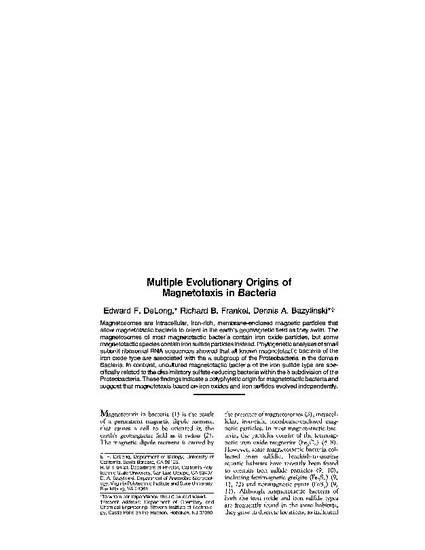
Magnetosomes are intracellular, iron-rich, membrane-enclosed magnetic particles that allow magnetotactic bacteria to orient in the earth's geomagnetic field as they swim. The magnetosomes of most magnetotactic bacteria contain iron oxide particles, but some magnetotactic species contain iron sulfide particles instead. Phylogenetic analyses of small subunit ribosomal RNA sequences showed that all known magnetotactic bacteria of the iron oxide type are associated with the a subgroup of the Proteobacteria in the domain Bacteria. In contrast, uncultured magnetotactic bacteria of the iron sulfide type are specifically related to the dissimilatory sulfate-reducing bacteria within the δ subdivision of the Proteobacteria. These findings indicate a polyphyletic origin for magnetotactic bacteria and suggest that magnetotaxis based on iron oxides and iron sulfides evolved independently.
Available at: http://works.bepress.com/rfrankel/83/
